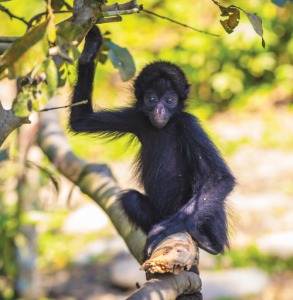For People, Species and Planet: A Powerful Partnership in Peru

Peru holds the second-largest expanse of Amazon rainforest in the world after Brazil. Over 60% of the country is blanketed by thick rainforest that has an astounding degree of biodiversity. Peru is in a close tie with Brazil for being home to the largest number of bird species in the world.
For countless generations, these vast rainforests at the western edge of the Amazon have been stewarded by Indigenous Peoples. But outsiders are grabbing land as fast as they can, legally and illegally, and clear-cutting mature rainforests for megafarms and to sell timber for profit. Once a rainforest falls to mechanized agriculture, habitat and species are completely wiped out and Indigenous ways of life perish along with them.
From 2001 to 2021, Peru lost nearly 9 million acres of tree cover. The Loreto region in the Peruvian Amazon alone lost more than other regions in Peru, with 1.9 million acres of forest deforested.
Loreto—as big as Montana—shelters thousands of species. Among those are many Endangered species like the Giant Otter, Black-faced Black Spider Monkey (pictured at right) and White-bellied Spider Monkey. Other threatened species in these areas include those listed as Vulnerable: the Lowland Tapir, Yellow-spotted River Turtle and Yellow-footed Tortoise.
Otter, Black-faced Black Spider Monkey (pictured at right) and White-bellied Spider Monkey. Other threatened species in these areas include those listed as Vulnerable: the Lowland Tapir, Yellow-spotted River Turtle and Yellow-footed Tortoise.
Rainforest Trust’s partner, Centro para el Desarrollo del Indígena Amazónico (CEDIA), has been working for over 40 years to help Indigenous and local communities achieve land ownership and management rights through Peruvian law, and to build the strength and capacity of their organizations. Rainforest Trust has successfully partnered with them for nearly 25 of those years, and together we have safeguarded more than 19.3 million acres of Peruvian Amazon rainforest with Indigenous and local communities.
Now we are working together to stop land-grabbing and other threats on 3,825,000 acres in the Loreto region, approximately 90% of which is highly intact, primary forest. The time is right to move forward with the land titling process because there is significant political will for Indigenous land titling at present. The communities are ready, and the threats are quickly growing. By supporting them, we can also secure a future for the imperiled species surviving in these vast rainforests.
One billion metric tons of carbon will be stored
The Peruvian Amazon is rich in stored carbon that benefits all life on Earth if it remains intact. The Indigenous territories included in this project will secure 1,196,895,157 metric tons of CO2 equivalents. If released into the atmosphere, the CO2 emissions that would result are comparable to burning over 2.7 billion barrels of oil—more than the 1,074,998,500 metric tons of CO2 emitted by South America in 2021.

Sign up to receive the latest updates
"*" indicates required fields









